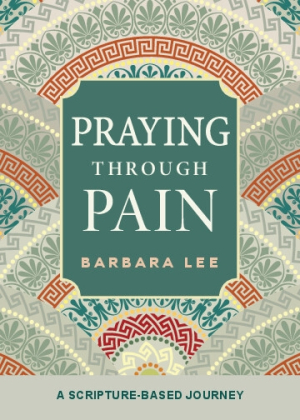Praying through Pain
A Scripture-Based Journey
Praying through Pain is a religious self-help text that draws on narratives, biblical passages, and Ignatian spirituality to comfort suffering people with the promise of God’s love.
Drawing on Ignatian spirituality, Barbara Lee’s self-help guide Praying through Pain assures its audience of God’s presence with those who suffer.
“Two to three millennia ago, people felt the same helplessness that we feel and took their feelings to God in prayer,” writes Lee. Her book, directed to the needs of Catholics with some knowledge the work of St. Ignatius of Loyola, is focused on the Ignatian Examen—a method for recognizing the presence of God in daily life. It brings forth helpful principles for prayerful decision-making based on traditional Ignatian guidelines. It also includes a compilation of short prayers and words or phrases that can be used as mantras when pain is too intense or time is too limited for other types of prayer.
The book also uses relevant scriptural passages that reveal how, after lamenting their circumstances, biblical figures (like King David, the prophet Jeremiah, and Mary Magdalene) took their deep sufferings to God, expressing trust and hope in God’s eternal character; it encourages doing the same today. And the psalms quoted in the text are potent, moving, and relatable, despite the millennia separating the psalmist from the present.
The book’s prompts for reflection involve more than just the intellect; they derive their power from their multisensory nature and their encouragement to explore both the Bible and personal, lived experience, with questions about what might it feel like when God rests his hand on one’s shoulder, or whether one can imagine God loving them into existence and forming them in the womb. These personal reflections are supported by guidance that invites probing into what’s going on in one’s inner self. The text affirms that, even in extreme distress, the belief that God has a plan for good can bring comfort. Recalling the many times the exhortations “Do not fear” and “Do not be afraid” appear in the New Testament, it argues that, based on God’s promises, these assurances can be trusted.
A statement referring to a healing done by Jesus at the pool of Bethesda, known for healing the first person to reach its waters, reads as follows, “In John’s telling of the story, it is not the water of the pool that brings life; it is the word of Jesus that does so.” But the water in the pool (or the power of the tradition associated with it) must have healed many to have earned its reputation, and it does not appear that Jesus’s act of healing negates the pool’s healing power. Another statement that does not appear to lead to its conclusion is: “It is when we are most helpless that we realize that our only help is in God,” as the example Lee uses is that of having fallen and being helped by the night doorman.
Comforting, reverent, and meditative in tone, the text follows a logical, repetitive pattern that, in itself, has a calming effect. Its personal stories of suffering through illness and loss are brief, discreet, and moving as they demonstrate how a heartfelt prayer, even with few words, can bring comfort.
Praying through Pain is a religious self-help text that draws on narratives, biblical passages, and Ignatian spirituality to comfort suffering people with the promise of God’s love.
Reviewed by
Kristine Morris
Disclosure: This article is not an endorsement, but a review. The publisher of this book provided free copies of the book and paid a small fee to have their book reviewed by a professional reviewer. Foreword Reviews and Clarion Reviews make no guarantee that the publisher will receive a positive review. Foreword Magazine, Inc. is disclosing this in accordance with the Federal Trade Commission’s 16 CFR, Part 255.


